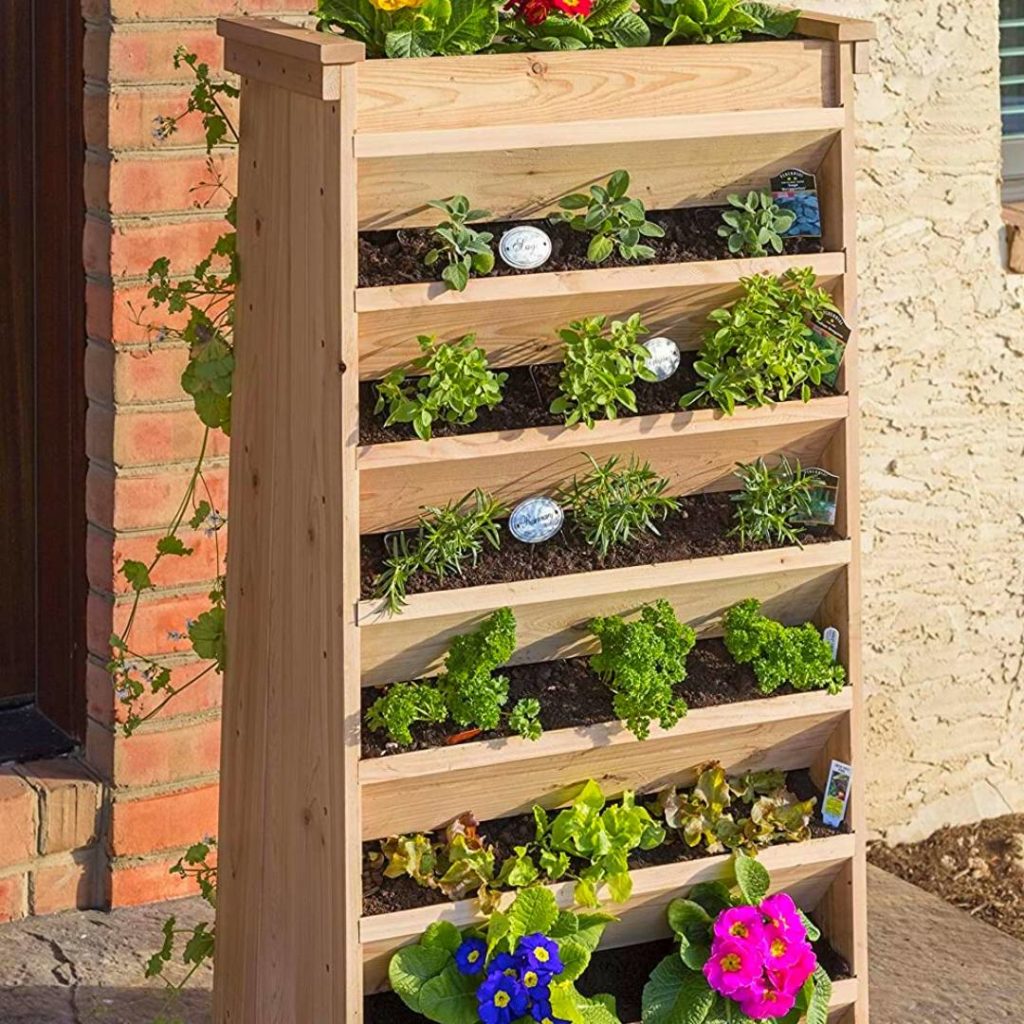How to Build a Small Vertical Herb Garden: A Step-by-Step Guide

Are you dreaming of a lush, fragrant herb garden but feel constrained by limited space? Imagine transforming a small corner of your home into a thriving vertical herb garden, where fresh herbs are always within reach. Whether you live in a bustling city or a cozy suburban home, building a small vertical herb garden is not only feasible but also incredibly rewarding. Let’s dive into this step-by-step guide to create your own urban herb garden oasis.
Why Choose a Vertical Herb Garden?
A vertical herb garden is the perfect solution for those with limited space. It allows you to grow a variety of herbs without sacrificing valuable floor or ground area. Additionally, vertical gardens are aesthetically pleasing and can add a touch of greenery to any room. They are also easier to maintain, as you can reach all your plants without bending or stretching.
Planning Your Vertical Herb Garden
Choosing the Right Location
The first step in building a small vertical herb garden is selecting the right location. Herbs thrive in sunny spots, so choose a wall or fence that gets at least six hours of sunlight daily. If you’re planning an indoor garden, a south-facing window is ideal.
Selecting Your Herbs
When selecting herbs for your vertical garden, consider their growth habits and sunlight requirements. Popular choices include basil, mint, rosemary, thyme, and parsley. These herbs are not only easy to grow but also add a burst of flavor to your meals.
Materials Needed
Before you start building, gather the necessary materials:
- Pots or planters
- Potting soil
- Herb seeds or seedlings
- A trellis, wall planter, or hanging pockets
- Watering can
- Gardening gloves
Building Your Vertical Herb Garden
Step 1: Choose Your Vertical Garden System
There are several types of vertical garden systems to choose from, including wall planters, hanging pockets, and trellises. Wall planters are great for indoor use, while hanging pockets and trellises are ideal for outdoor gardens. Choose a system that fits your space and aesthetic preferences.
Step 2: Prepare Your Pots and Planters
Fill your pots or planters with high-quality potting soil. Ensure the soil is well-draining to prevent root rot. You can also add a layer of gravel at the bottom of the pots to improve drainage.
Step 3: Plant Your Herbs
Plant your herb seeds or seedlings according to the instructions on the packet. Make sure to space them appropriately to allow for growth. Water the herbs gently to settle the soil around the roots.
Step 4: Install Your Vertical Garden System
Install your chosen vertical garden system according to the manufacturer’s instructions. Ensure it is securely attached to the wall or fence to prevent accidents.
Step 5: Arrange Your Herbs
Arrange your potted herbs on the vertical garden system. Place taller plants at the top and shorter ones at the bottom to ensure all plants get adequate sunlight.
Maintaining Your Vertical Herb Garden
Watering
Herbs generally require moderate watering. Water your herbs when the top inch of soil feels dry. Avoid overwatering, as this can lead to root rot.
Fertilizing
Use a balanced liquid fertilizer to provide your herbs with the nutrients they need. Fertilize every two to four weeks during the growing season.
Pruning
Regularly prune your herbs to encourage bushy growth and prevent them from becoming leggy. Pinch back the tips of the stems to promote new growth.
Tips for Success
Rotate Your Plants
Rotate your plants periodically to ensure they all get equal amounts of sunlight. This will help prevent one side of the plant from becoming leggy or spindly.
Monitor for Pests
Keep an eye out for pests such as aphids, spider mites, and whiteflies. Use organic pesticides or homemade remedies to control pest populations.
Harvest Regularly
Harvest your herbs regularly to encourage new growth. The more you use your herbs, the more they will produce.
Conclusion
Building a small vertical herb garden is a rewarding endeavor that brings fresh herbs right to your fingertips. With careful planning, the right materials, and a bit of creativity, you can transform any space into a lush, fragrant oasis. Whether you’re a seasoned gardener or a beginner, a vertical herb garden is a fantastic way to add greenery and flavor to your life. So, why wait? Start your vertical herb garden journey today and enjoy the fruits (or herbs) of your labor!
FAQs
1. What are the best herbs for a vertical garden?
The best herbs for a vertical garden include basil, mint, rosemary, thyme, and parsley. These herbs are easy to grow and thrive in well-draining soil with plenty of sunlight.
2. How often should I water my vertical herb garden?
Water your vertical herb garden when the top inch of soil feels dry. Avoid overwatering, as this can lead to root rot.
3. Can I grow herbs indoors?
Yes, you can grow herbs indoors. Choose a sunny spot, such as a south-facing window, and ensure the herbs get at least six hours of sunlight daily.
4. How do I control pests in my vertical herb garden?
Use organic pesticides or homemade remedies to control pests in your vertical herb garden. Regularly inspect your plants for signs of pests and take action promptly.
5. How often should I fertilize my herbs?
Fertilize your herbs every two to four weeks during the growing season with a balanced liquid fertilizer. This will provide them with the nutrients they need for healthy growth.


0 Response to "How to Build a Small Vertical Herb Garden: A Step-by-Step Guide"
Post a Comment